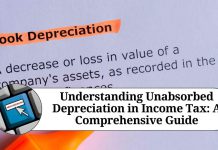Introduction
Amalgamation is a process where two or more companies merge together to form a new company, which acquires all the assets and liabilities of the amalgamating companies. This process is governed by the Income Tax Act, 1961. In this blog, we will discuss the provisions of the Income Tax Act dealing with amalgamation and their implications.
Section 2(1B) – Definition of Amalgamation
Section 2(1B) of the Income Tax Act defines the term amalgamation as “the merger of one or more companies with another company or the merger of two or more companies to form a new company.” This definition is important as it sets the scope of the provisions dealing with amalgamation.
Section 2(19AA) – Definition of Demerger
Section 2(19AA) of the Income Tax Act defines the term demerger as “the transfer of one or more undertakings by a demerged company to another company.” This definition is important as it sets the scope of the provisions dealing with demerger.
Section 2(19B) – Definition of Resulting Company
Section 2(19B) of the Income Tax Act defines the term resulting company as “the company which is the result of amalgamation or demerger.” This definition is important as it sets the scope of the provisions dealing with the resulting company.
Section 2(22) – Definition of Transfer
Section 2(22) of the Income Tax Act defines the term transfer as “the transfer of a capital asset, whether or not there is a consideration for such transfer.” This definition is important as it sets the scope of the provisions dealing with the transfer of assets and liabilities.
Section 35DDA – Amortisation of Certain Expenditure
Section 35DDA of the Income Tax Act provides for the amortization of certain expenditure incurred in connection with the amalgamation. The expenditure that can be amortized includes any expenditure incurred in connection with the amalgamation, such as fees paid to lawyers or accountants, expenses incurred in connection with the issue of shares or debentures, and any other expenditure of a similar nature.
Section 72A – Carry Forward and Set Off of Accumulated Losses and Unabsorbed Depreciation
Section 72A of the Income Tax Act provides for the carry forward and set off of accumulated losses and unabsorbed depreciation of the amalgamating company. The accumulated losses and unabsorbed depreciation of the amalgamating company can be carried forward and set off against the profits of the amalgamated company for a period of eight years.
Section 115JA – Minimum Alternate Tax
Section 115JA of the Income Tax Act provides for the minimum alternate tax (MAT) on companies. In case of an amalgamation, the MAT provisions are applicable to the resulting company. The MAT is calculated on the book profits of the resulting company.
Section 115JB – Alternate Minimum Tax
Section 115JB of the Income Tax Act provides for the alternate minimum tax (AMT) on companies. In case of an amalgamation, the AMT provisions are applicable to the resulting company. The AMT is calculated on the adjusted total income of the resulting company.
One of the key benefits of amalgamation is the ability to carry forward and set off accumulated losses and unabsorbed depreciation of the amalgamating company against the profits of the amalgamated company. This can result in significant tax savings for the resulting company. However, it is important to comply with the relevant regulations to ensure that these benefits are not lost.
Another important aspect of amalgamation is the transfer of assets and liabilities. Section 2(22) of the Income Tax Act defines the term transfer broadly, to include any transfer of a capital asset, whether or not there is a consideration for such transfer. This means that companies must carefully consider the tax implications of transferring assets and liabilities during the amalgamation process.
In addition to the above provisions, there are also specific provisions dealing with the tax treatment of certain transactions such as the issuance of shares or debentures, which are often used in the amalgamation process. Companies must ensure that they comply with these provisions to avoid penalties and legal issues.
Finally, it is important to note that the provisions of the Income Tax Act dealing with amalgamation are complex and may require the expertise of tax professionals. Companies should consult with tax professionals to ensure that they understand and comply with the relevant regulations to avoid any adverse tax consequences.
Conclusion
In conclusion, the provisions of the Income Tax Act dealing with amalgamation are an important consideration for companies that are planning to merge with other companies or form a new company. Companies must carefully consider the tax implications of the amalgamation process and comply with the relevant regulations to avoid penalties and legal issues. With careful planning and compliance, companies can achieve the benefits of amalgamation while minimizing their tax liabilities.
Frequently Asked Questions (FAQs)
What is amalgamation in the context of the Income Tax Act?
Amalgamation is a process where two or more companies merge together to form a new company, which acquires all the assets and liabilities of the amalgamating companies. The Income Tax Act has provisions that govern the tax treatment of such transactions.
How are the assets and liabilities of the amalgamating companies transferred to the new company?
The assets and liabilities of the amalgamating companies are transferred to the new company through a transfer of ownership. This transfer can take various forms, such as the transfer of shares or the transfer of specific assets and liabilities.
What tax benefits are available to the resulting company in an amalgamation?
The resulting company in an amalgamation can benefit from the carry forward and set off of accumulated losses and unabsorbed depreciation of the amalgamating company against the profits of the amalgamated company.
What is the tax treatment of the issuance of shares or debentures during an amalgamation?
The Income Tax Act has specific provisions that govern the tax treatment of the issuance of shares or debentures during an amalgamation. Companies must comply with these provisions to ensure that they do not incur any penalties or legal issues.
What is the minimum alternate tax and how does it apply to amalgamation?
The minimum alternate tax is a tax that is levied on companies in certain circumstances, such as when they report low profits or show no profits. The MAT provisions of the Income Tax Act apply to the resulting company in an amalgamation.
How does the carry forward and set off of accumulated losses and unabsorbed depreciation work in an amalgamation?
The accumulated losses and unabsorbed depreciation of the amalgamating company can be carried forward and set off against the profits of the amalgamated company for a period of eight years.
Can a demerger also be covered under the provisions of the Income Tax Act dealing with amalgamation?
Yes, the Income Tax Act has specific provisions dealing with demerger as well, which are similar to the provisions dealing with amalgamation.
Are there any penalties for non-compliance with the provisions of the Income Tax Act dealing with amalgamation?
Yes, companies can face penalties and legal issues if they do not comply with the relevant provisions of the Income Tax Act dealing with amalgamation.
Can tax professionals assist with compliance with the provisions of the Income Tax Act dealing with amalgamation?
Yes, tax professionals can assist companies with compliance with the relevant provisions of the Income Tax Act dealing with amalgamation.
Are there any other tax considerations that companies should be aware of when undergoing an amalgamation?
Yes, companies should also consider other tax implications such as stamp duty, value-added tax, and service tax, in addition to the provisions of the Income Tax Act dealing with amalgamation.



































